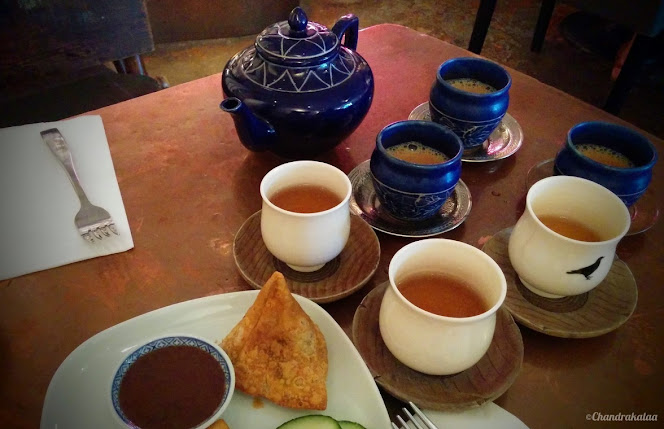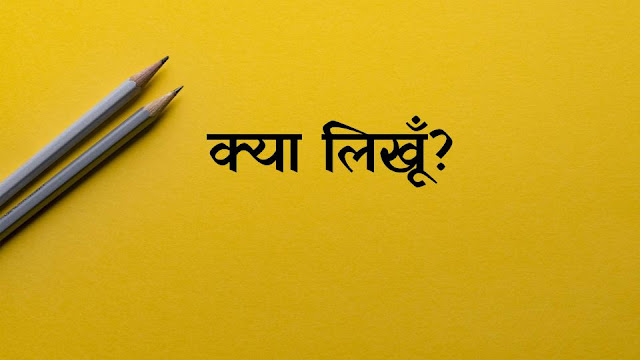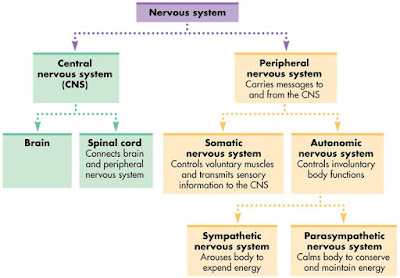Kashi, the oldest living city in the world has been on my mind since long. The beautiful verse by Adi Shankaracharya in his 5 verse composition of kāśī pancakam describes self, the self shining awareness as kashi in which shines everything - सा काशिकाहं निजबोधरूपा. Its a beautiful verse comparing the tranquility of the mind to the manikarnika ghat which is also the cremation ghat signifying tranquility, putting body identification to rest. The tranquility of manikarnika and the pure flow of river Ganga as the knowledge both are kashi in which the self is understood as kashi - the self shining one in which everything shines.
I am writing about my journey so that it can be useful to anyone visiting Varanasi. Google map of kashi isn't up to date and thus can be confusing.
For our visit, we took an intercity train from Lucknow to Varanasi which started Sunday morning 7am and arrived around 1pm at Varanasi junction railway station. From there we took an e-rick to the ghat area. Note that the rickshaw does not go exactly till the ghats and thus some walk is required to get there. On the way we had puri-sabji at Madhur Milan near the ghats. From there we directly checked into the lodge - Ganga darshanam near daśāśvamedh ghat.
Gaṅgā aarti
We went to the daśāśvamedh ghat around 5pm to be there on time for the gaṅgā Aarti. Aarti starts around 6pm and the boats start filling up by 5:30 so one can take a boat ride to see various ghats and then come back close to the daśāśvamedh ghat to watch the aarti while sitting in the boat. We saw major ghats from hariścandra to maṇikarṇikā both of which are known as ghats for performing last rites. We got back to the aarti ghat in time and then stayed in the boat till the aarti completed at around 7:45pm.
 |
| Ganga Aarti at Dashashvamedh Ghat |
Food
After coming back from the ghat, we started looking for a place to eat. After exploring a bit we decided to eat at the Cafe D Benaras in the market area. Food was good. We had aloo parantha and roti with kadhai paneer. After dinner, some of us had lassi from a road side small shop near our lodge.
After coming back from the ghat, we started looking for a place to eat. After exploring a bit we decided to eat at the Cafe D Benaras in the market area. Food was good. We had aloo parantha and roti with kadhai paneer. After dinner, some of us had lassi from a road side small shop near our lodge.
Kāśī viśvanātha
Next morning we were supposed to visit the kāśī viśvanātha mandir early morning at 3am so we decided to retire early in the night by 9:30pm. kāśī viśvanātha is amongst the oldest shiva temples and one of the 12 main Jyotirlingas as per the śiva purāṇa (वाराणस्यां तु विश्वेशं त्र्यम्बकं गौतमीतटे). Next day woke up at 1:45am in the morning and got ready with a good shower. We departed for the mandir around 2:30am and reached there in 10 min by walking. It had rained in previous night so the streets were a little wet. There was already a long queue at the mandir. Even though we had bought the limited reserved mangala tickets, the experience of standing in the queue wasn't worth it on a Monday morning as there were likely lot more people than usual. We were allowed to enter the temple around 3am. Aarti lasted around 45min and then we were allowed to go near the Shivalingam. By that time the local crowd was also allowed to enter the temple thus making it very crowded as everyone was just eager to do abhishekam on a Monday. While it was amazing to see the people and their faith, we were just hoping that it doesn't lead to a stampede. Other days of the week may be better to do mandir darshanam.
Morning chai
After walking around the temple verandah, we started back for our lodge at 4am. We got some more sleep after getting back. Around 7:30am we walked to the nearest chai stall - Harih Om chai stall and had good morning tea in kulhaḍa.
After walking around the temple verandah, we started back for our lodge at 4am. We got some more sleep after getting back. Around 7:30am we walked to the nearest chai stall - Harih Om chai stall and had good morning tea in kulhaḍa.
Ghat walk and Vishwanath Corridor
Later that morning, we started to walk towards the Vishwanath mandir corridor between daśāśvamedh and maṇikarṇikā ghats. We went inside the corridor but then decided to take the maṇikarṇikā ghat road as belongings were not allowed inside the corridor. We needed to get to gate no. 4 from where to buy the tickets for sugam darshanam as some of us didn't do the early morning visit. Since this is the road that leads to the ghat from the maṇikarṇikā dvāra from the market area, one must see multiple funeral processions on the way.
Lassi and Breakfast
I wasn't planning on visiting temple again this time so we enjoyed the lassi at the blue lassi shop on the manikarnika ghat road. At least 4-5 death processions passed through while we waited at the shop for lassi. They can make one question the activities of life including eating. It also turned out that the sugam darshanam time were not available that day so everyone decided to eat breakfast at a kachori (a deep fried snack) shop near Manikarnika gate in Gowdolia road. One of the gali there is also famous as kachori Vali gali.
Sarnath
From there we walked back to the nandi circle and decided to hire auto rickshaw to visit Sarnath. After some price haggling we were able to get a to and fro auto rickshaw which took us to Wat Thai Temple at Sarnath. This was established by Thai dignitaries. There is a Buddhist temple inside and a 80.9 ft Buddha statue along with gardens and a pond with blue lotus from Thailand.
After that we visited the silk shop near by and had lunch at a restaurant called Lazania. After the lunch, we went to the Sarnath stupa and museum. The remains at the museum gave a good view of the temples at the time of Buddha. The temple and architecture remains had Hindu gods.
 |
| Sarnath |
Assi Ghat and Street walk
From there we got back to Varanasi and stopped at Assi Ghat, the southernmost ghat. We were able to be at the Ganga aarti and then walked back through the narrow streets to our lodge. During this walk one can get a good glimpse of the narrow streets of Varanasi and the optimal use of space for shops etc. There are many guest houses and small eateries on the way. That night we ate dinner at our lodge restaurant.
Morning Ghat visit
Next morning I went to take an early morning walk at the ghat. The morning scene was quite busy with people taking Ganga bath. You can also find some people using dātuna. Overall everyone was disciplined and respectful of Ganga ji.
Journey back
That afternoon we took a train back to Lucknow (varanasi-indore mahakaal express). The train was quite good and got us back in 4-4.5 hrs.
That afternoon we took a train back to Lucknow (varanasi-indore mahakaal express). The train was quite good and got us back in 4-4.5 hrs.
Summary
Lodge - Ganga Darshanam near Dashashwamedh ghat. It is a decent facility and 1 minute walk to the ghat.
Trains - Intercity from LKO to BSB, Varanasi-Indore Mahakaal express from BSB-LKO
Food - street food was the best.
Places - definitely visit the major ghats - dashashwamedh, manikarnika, assi and others nearby. Visit Vishwanath temple, old kashi streets, temples all around. Take a boat ride to see the ghats.






































